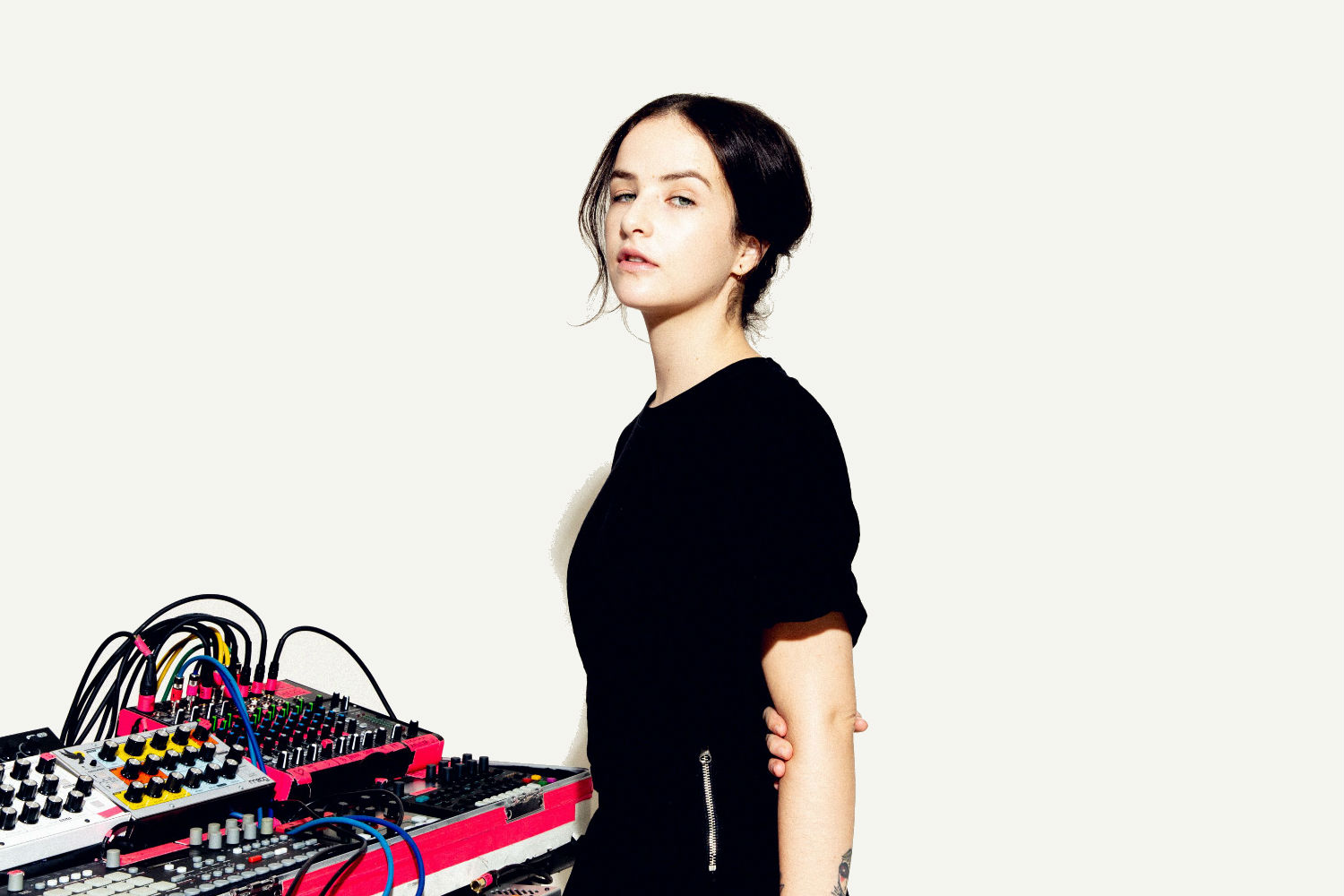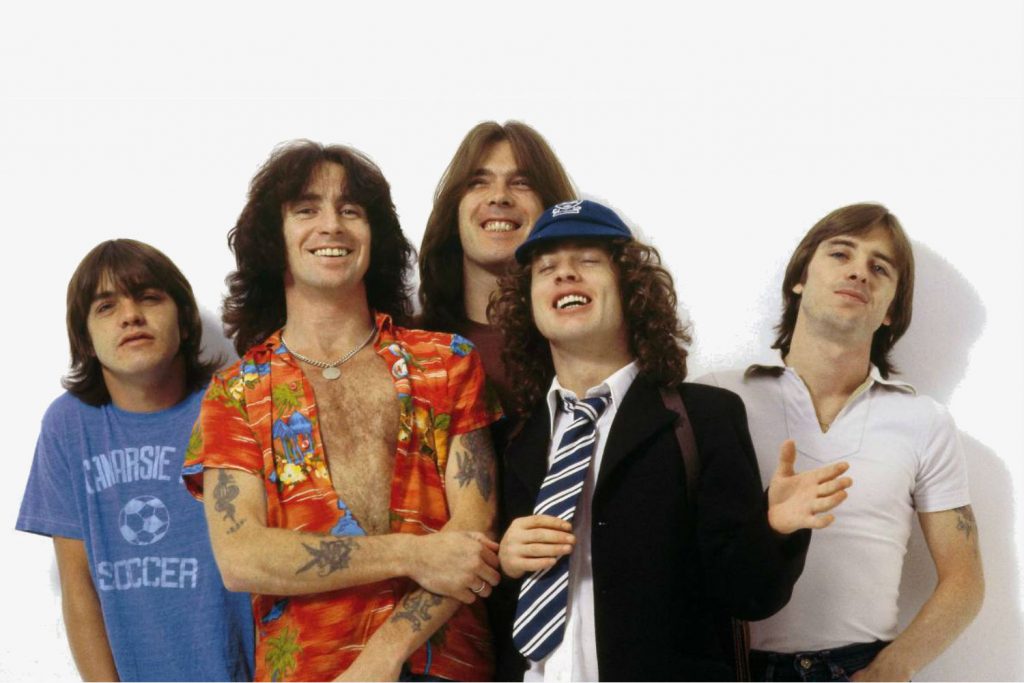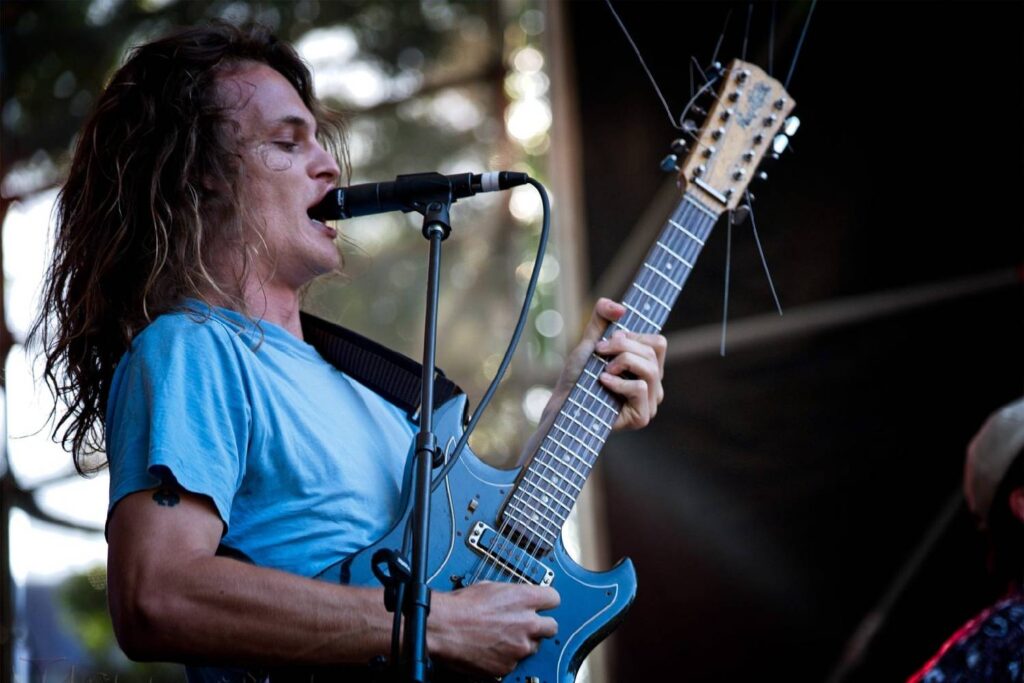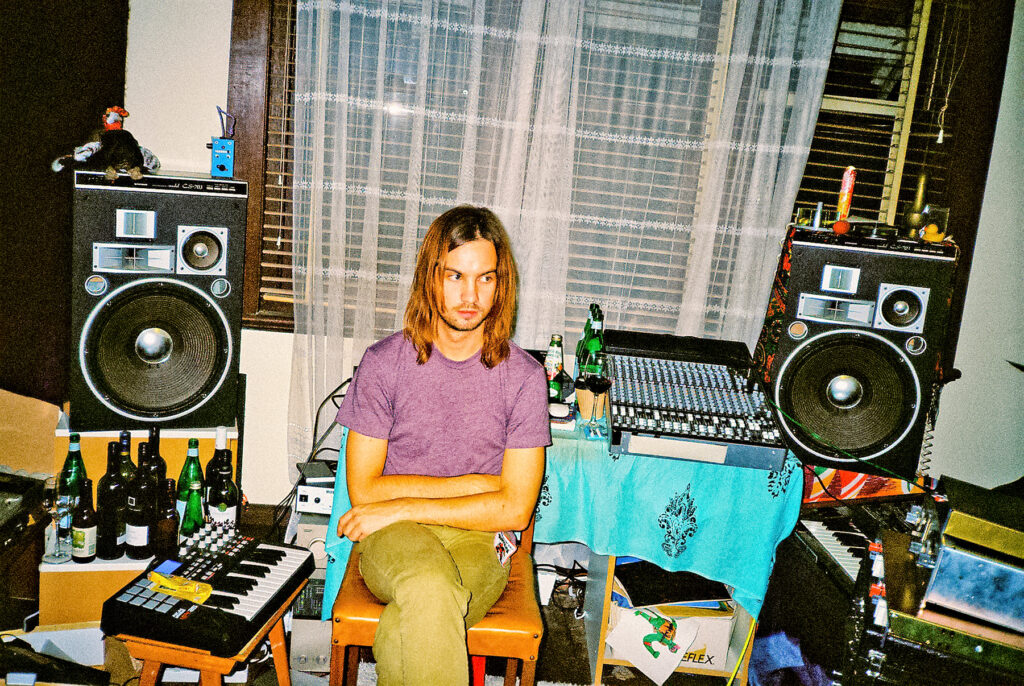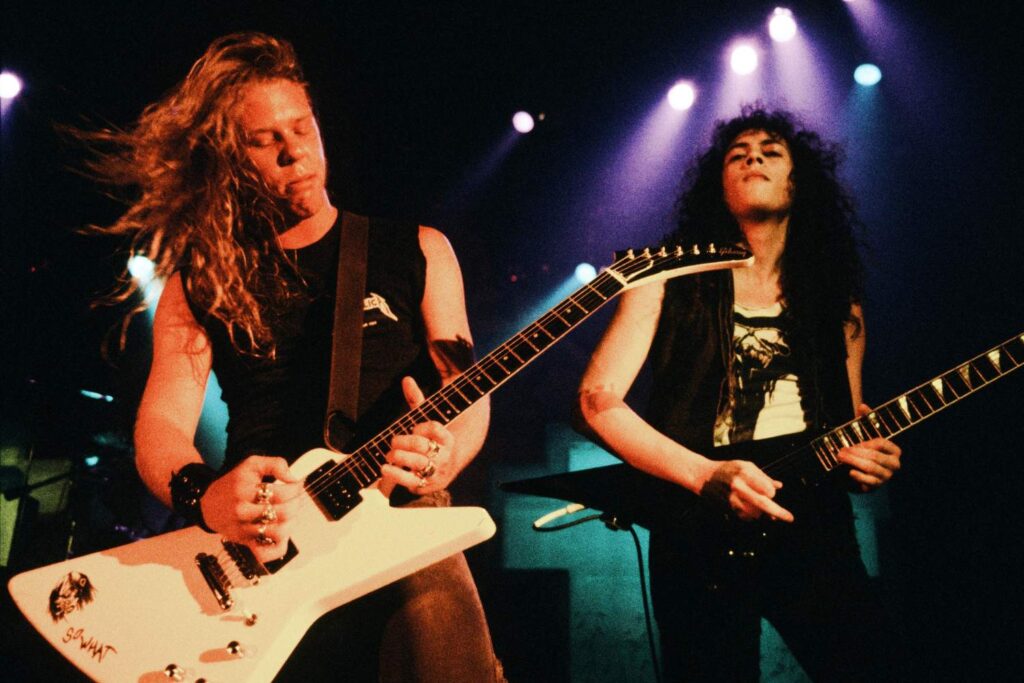Ela Minus is fed up with laptops.
As an avid enthusiast of all things analogue, the Colombian electronic producer has made it her mission to push the sounds of electronic music to its absolute fullest without resorting to an on-screen grid, and on her debut record, she’s done just that.
Written, performed and produced by Ela Minus in its entirety, acts of rebellion is as much of a surging call to arms as it is an ode to the dance-floor. Recorded on an all hardware setup of synths, drum machines, sequencers and effects, it’s a raw techno opus that pays tribute to the manic button-mashing process of the genre’s pioneers, yet remains structured and melodic enough to squeeze onto daytime radio without causing any alarm.
With the release of the new record, we spoke with Ela Minus about her formative experiences with electronic music, how her background in programming has assisted her process as an artist, and all the hardware used to create the new album acts of rebellion.
Congratulations on the album, you must be absolutely stoked to have it out in the world.
Thank you! To be honest, it still feels extremely surreal, but I am very happy about it.
Does it feel strange to release music that’s so new to us listeners, but so old to you?
Yes and no. I’ve never done this before, to be honest. As a solo artist, I’ve always released my music really fast, so I think surprisingly, it’s still new for me because, you know, I haven’t been holding onto it, but because it hasn’t been public. It’s the first time I’ve done something like that, and I think it’s a cool experiment. Like everything the first time you do it, there’s both the good things and the bad things I’m experiencing for the first time.
It must be such an odd time to release music, especially when there’s no touring, so I’m glad that you’ve still managed to enjoy the process of it all.
To be honest, I think I’m fine with it, weirdly enough! I’ve been able to do a lot of really cool things that I was never able to do before because of the times, like all the videos, and everything just being focused around the music.
I’d love to hear about your formative experiences with electronic music. You initially started as a punk drummer – what was it that helped you become interested in electronic music and programming? Was there any singular Eureka moment?
I don’t know if there was any one Eureka moment; I guess it happened slowly over a couple of years. It started I think with In Rainbows first when I was 15 or 16, which was the first time that I had heard synthesisers and electronics used in a band – I’d never heard that before, or at least not consciously.
Later, I moved to the US for college to go to jazz school and lived in a city that had a club scene, which growing up in Colombia, I hadn’t been exposed to at all. So I started going to clubs and just listening to more electronic music. I guess I had a Eureka moment when I heard There Is Love In You by Four Tet, and was like, ‘this is the most beautiful thing I’ve heard’.
I had a scholarship at school, so I kind of wanted to learn something else that wasn’t only drums, just to be a little bit more responsible with my future. I wanted to code on computers so I could program software synths, I decided to also study music synthesis, and of course, when I graduated and I hated it and was like ‘fuck this, I love hardware, fuck laptops’. And so I got a job building hardware with Critter & Guitari, and then eventually I started making my own music with it.
What was it like working at Critter & Guitari? What were you tasked with doing?
I was doing the assembly, so actually soldering and building the synths. It’s such a tiny company. When I was there, there were two guys who were the owners, but then only one of those guys was based at the studio, and then there was another employee and me. So there were three people in total, so we all did everything really. But I mostly assembled and like for like the first year, two years, I’d just build the synths and fixed things that were returned and testing them, you know, really everything on an assembly line. The last year I was there was when we did the Organelle, which I helped program and do more of the under-the-hood design.
Has any of that knowledge of programming and coding ever seeped into the way you approach your music?
Sure. I think that everything you know comes out in every thing you do, but my setup is quite simple – it’s not like something that someone that didn’t have the knowledge I have wouldn’t be able to put together. It is extremely handy to be able to fix things quickly and follow the signal flow faster, which is great for when things like that need troubleshooting.
Walk us through your setup – what synths, sequencers, samplers and effects are you using?
It’s pretty simple really. The main heart is the MPC 1000, which I know people mainly use as a sampler, but it’s also a great MIDI sequencer, so that’s my main sequencer and also the master clock. From that, I take out to me out one is only going to the Elektron Analog RYTM, which is the only drum machine I have, so all the beats come out of that, and then the other MIDI output is going to a MIDI splitter so I can have more channels, and that’s the rhythm section really.
I also have a Moog Minitaur for bass and a Sirin for melodies, and then the (Critter & Guitarri) Pocket Piano. And that’s it for now for the live show, as well as what I mostly used for the record. I also have a Juno 60 that I used a lot on the record, which is the main synth, and then I have effects… I don’t know if should just go into the effects as well…
Please, do!
So, there’s a Strymon Blue Sky reverb on one send of the mixer and a Strymon Timeline for delay on the other send, and then for the drum machine, I have the Oto BOUM. I actually only use it in mono, so I take mono out of the Elektron, even the kicks. I use everything in mono – I feel like it’s controversial, but I really love the sound.
I also sing, obviously, so I have a mic, but it’s very dry. I have a TC Helicon Doubler, and then I like processing my vocals with the same effects as I process the entire mix. I feel like that really ties everything together nicely. It’s very simple.
How long did it take you to build up your rig? Was there a lot of trial and error involved?
I’m definitely not the type of person that keeps switching setups. I’ve had the same setup basically since the beginning, even though I have more synths now. I have a couple of things that I love that don’t travel with me, like the Juno and a Yamaha DX 100, and I have a small Eurorack system too, but those never traveled with me.
I actually got the MPC very early on just because I’ve always been really curious about them and I wanted to learn how to build one. I got the one that I still have when I was at school for like $50 because it was destroyed, and I just fixed it myself. bucks because he was like destroyed and I just fixed it myself. Then I bought the early Analog RYTM model and loved it, and that was the same with the Minitaur.
The Sirin is kind of new – I used to have a Waldorf Blofeld, but it broke, and that’s when I realised I could just do everything completely analogue. Everything else that’s polyphonic I just sample to the MPC, and that I think sounds way better. But really, it’s just four synths – it’s not that big or expensive. The bass, the drum machine and the MPC is really everything I need, and I’ve had those for a long time now.
MPCs are so powerful for sequencing; I feel like there’s such an underrated tool for electronic production and performance, just because when people think of an MPC, their mind immediately springs to Pete Rock or like J Dilla.
They are, I totally agree with you. When I discovered it, I was like, ‘What the fuck? Why isn’t everybody talking about this?’ I don’t get it. I’ve tried a lot of newer sequencers like the Pyramid, which so is amazing and so powerful, but still not as musical as the MPC, especially for live playing. I often get very annoyed by modern equipment.
One of the things I love the most about the MPC is a very simple detail, but it’s the fact that I can load a sequence while I’m still playing the other one, so I can keep going with my set without stopping at all. No other sequencer I can do that. I think all of those things are very under underestimated or undervalued.
How did you record the album? Did you kind of track the whole thing as if you were jamming or performing it live, or do things stem-by-stem?
Both. I have an RME Babyface interface, and for everything I’d done before the album, I was recording into the stereo ins, playing completely live and only overdubbing my vocals. It was cool to learn on, because I taught myself how to mix on the actual synths and approaching it similar to a sound design kind of thing. The only thing I’d really do on the computer was put on a bit of EQ or limiter, but that was it.
For this album, I wanted to have the option of mixing, especially because one of the things I felt like my music was missing was a strong mix. I remember listening to my pieces even six months after I made them and being like, ‘shit, I could have done this better,’ especially when it’s being translating to Spotify and other digital stuff. I remember being really happy with my live sound, but not so happy with how it turned out recorded, so I actually did use multi-tracking for this record. Almost none of my sessions have more than 20 tracks total, so they’re still pretty simple.
Are there any real limitations that you’ve experienced with your setup?
Yeah, of course – many! I’m very aware of how little memory the MPC has to sample, especially when I’m doing polyphonic things that take up a lot of space. I try to not overdub things on record that I can’t play live, but I think I’m going to grow away from that mentality, because the technology exists for me to not have to think about it.
Also, I used to use the MPC clock when recording, and sometimes I’d record a perfect-sounding take but then fuck it up, so I have to do it all over again. That used to take forever to edit it down, because I wasn’t using the MIDI clock from the laptop because I felt like it was too square, and having no grid made it a nightmare to edit. I do think the limitations that I’ve actually found to be useless I’ve fixed over time, and the ones that I think aren’t useless actually help me to make better music. I think they’re cool.
I suppose that’s what techno was all about originally; just playing with machines and creating as many jarring noises as possible. There’s a certain rawness afforded by hardware that’s void in a lot of modern electronic music – it’s a lot easier to sound so pristine nowadays.
That’s exactly why I started doing what I’m doing now. As a fan who was going to the club and listening to electronic music, I was bored, because everything sounded so clean and soulless. I don’t think it’s only the laptop’s fault, obviously – again, using Four Tet’s album as an example, that’s some of the most emotional, human-sounding electronic music that I’ve ever heard, and he clearly uses laptops.
Acts of Rebellion has just been released, but it’s quite an old record for you now. Have you started recording any new material yet? Has your sound evolved much since you tracked the album?
I haven’t yet, to be honest. I did for a long time back in December and January of last year, but I was doing a lot, so I wasn’t really writing. I’d just finished the record before I went on tour for two months, and then just slept and I recorded again. I had a plan to make a second album throughout this year in between tours, but then everything changed, and I honestly haven’t sat down to go back to that. However, I have actually blocked my calendar starting November 15 to start the second album, which is really exciting to me.
acts of rebellion, the debut album from Ela Minus, is out now via Domino.
